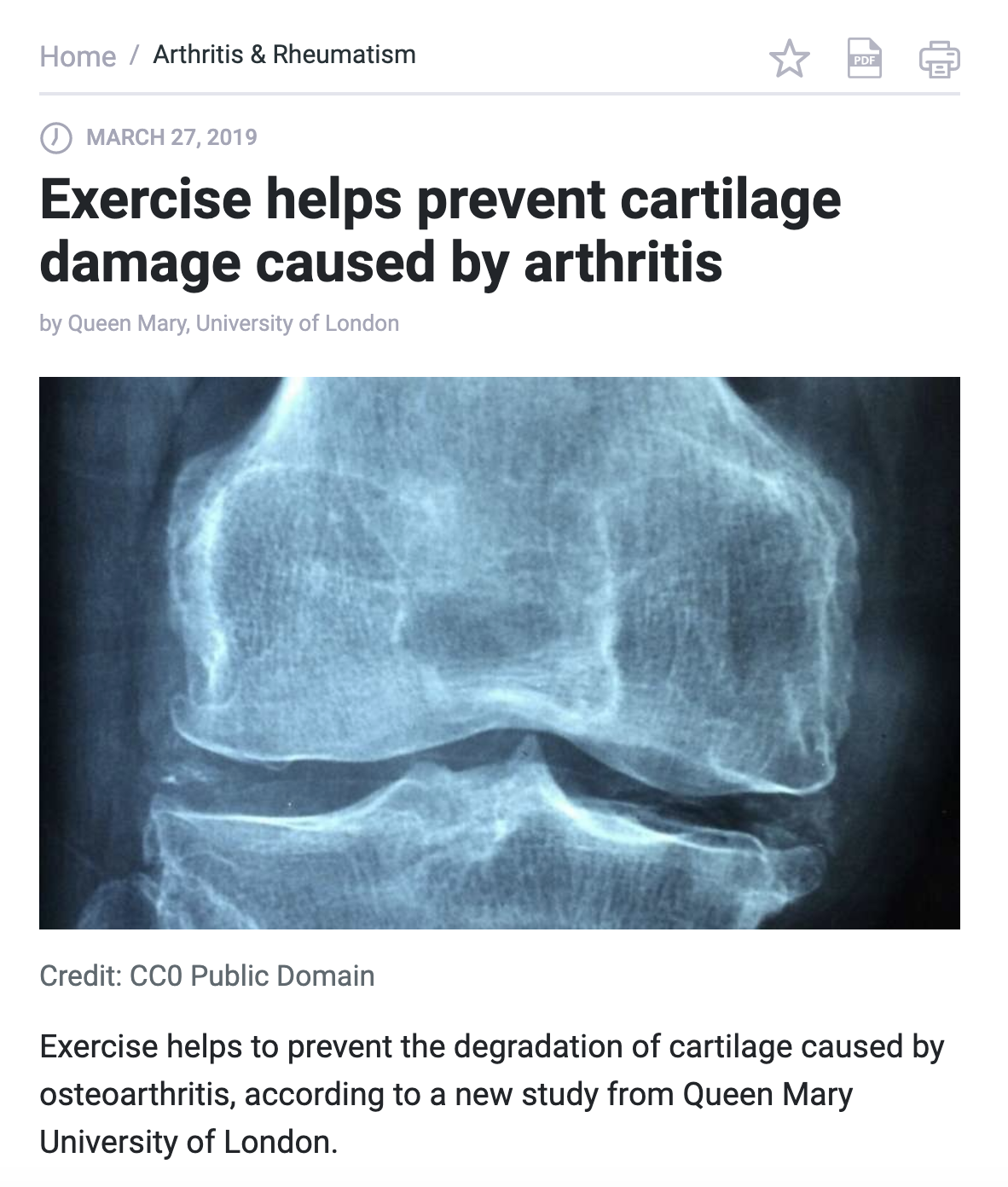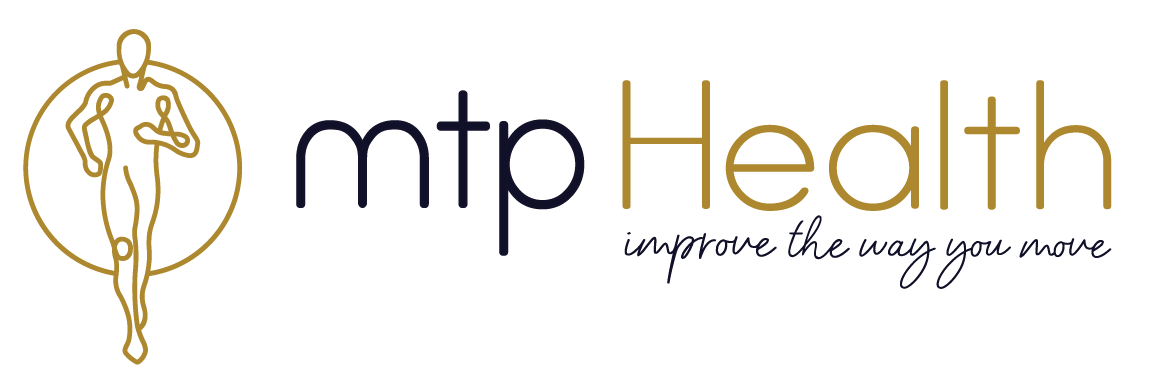A Guide to Squatting With Knee Pain [Why You Shouldn’t Avoid It]

Squatting can be one of the best thing to prevent cartilage damage. SOURCE: Click Image [Medical Xpress]
A lot of people that we see in the clinic have avoided this movement entirely for years, feeling like squatting is something bad and should never be done.
This belief typically stems from the notion that having your knees travel over your toes is bad for the health of the knee joint. The argument is essentially that because when our knees go over our toes, there is more pressure on the knee joint. When we look at how exercise & specifically strength training actually works, we can begin to realise that this conclusion is quite simply preposterous. Exercise works because our body is responding to forces. In the case of strength training, it’s concentrated force placed on a joints muscular attachment throughout a controlled range of motion that causes the favourable adaptations we’re after (including increases in bone density, ligament strength, hormonal/metabolic profile & muscle mass to name a few).
Saying that we need to avoid squatting (or any movement) entirely because we’re in pain is simply a lazy way of thinking. Plus it avoids the most fundamental law of physiology (the law of adaptation). It’s like saying that bodybuilders seeking large biceps need to avoid bicep curls because of the extra stress it places on the elbow joint.
With this said, however, there is some truth to the idea that avoiding knees over toes might be a good idea (just not forever). In our situation, we see thousands of people who struggle with knee pain, often in the form of severe conditions such as osteoarthritis. For these people, a minor increase in the amount of force their joint experiences could leave them feeling incredibly sore for days. What needs to happen for these people is a slow & gradual progression towards retaining their normal pain-free motion. For people who experience pain with squatting, the best way to begin this is to teach them to squat a little bit differently. Over time they can start to rebuild their body to be able to handle the forces associated with squatting (according to the law of adaptation) and eventually free themselves from knee pain overall.
Squatting is one of the most beneficial movements we can do for our overall health & wellbeing (See how dramatic this effect is in this article showing how our ability to squat is predictive of all-cause mortality). It is one of the most fundamental human movements, being an archetype of a lot of our daily movement i.e. squat well = move well.
With all of this said, we want to share with you everything we know about how to improve this fundamental movement & progress out of your knee pain.
So let’s dive in!
When it comes to your exercises, always focus on quality over quantity

Squatting Is Simply Loaded Flexion of Our Knees. This Type Of Movement Happens When We do Just About Anything, From Walking to Lifting & Everything in Between
How to squat
The squat is a highly functional exercise: every time you sit down or stand up, it is the same movement pattern as a squat. Getting your technique right will go a long way in terms of reducing your hip & knee pain in day to day life.
5 ways to improve your squat
- Maintain even pressure throughout your feet. Be careful not to come up onto the balls of your feet or roll toward the inside or outside of your feet.
- Keep your knees in line with your toes. Be careful not to let them collapse in or out during the movement.
- Keep your chest up. This will help straighten and support your back.
- Drive your Knees Out, so you keep the tension pushing out.
- Learn How to Pull into your squat (See the video below)
Minimise knee pain during squats
The easiest way to unload pain from your knees during a squat is to shift some of the stress to your hips:
- Initiate the squat movement by pushing your hips back rather than bending your knees
- Shift your weight slightly to your heels
- Keep your shins vertical to the ground so that your knees don’t travel forward much during the movement
It is important to remember to spread your weight evenly throughout each leg; most people favour their stronger side and shift their hips without realising. Try doing your squats in front of a mirror to get your movement right!
